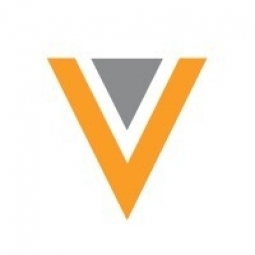Technology Category
- Application Infrastructure & Middleware - Data Exchange & Integration
- Platform as a Service (PaaS) - Application Development Platforms
Applicable Industries
- Electronics
- Life Sciences
Applicable Functions
- Quality Assurance
Use Cases
- Leasing Finance Automation
- Regulatory Compliance Monitoring
Services
- System Integration
About The Customer
Pacira is a pharmaceutical company that is committed to driving innovations to provide better ways to safely and effectively manage pain. The company is focused on the development and commercialization of novel products that address important unmet medical needs in acute care settings. Pacira's regulatory department is responsible for ensuring that the company's products meet all necessary regulatory standards and requirements. The department was looking for a solution that could streamline their promotional material submissions process and provide a secure, part 11 compliant system for collaborative authoring and submissions.
The Challenge
Pacira, a pharmaceutical company, was facing challenges in streamlining its promotional material submissions process. The company was using inefficient paper- and email-based approaches that were not only time-consuming but also lacked the necessary speed and efficiency. The situation was further exacerbated during the pandemic when remote workers did not have access to high-speed printers. Additionally, as Pacira's regulatory department grew, they needed to replace SharePoint with a secure, part 11 compliant system for collaborative authoring and submissions. The company was also looking for a solution that could manage promotional submissions together with their other regulatory submissions on the same platform.
The Solution
Pacira implemented Veeva's Vault PromoMats four years ago to help medical, legal, and regulatory teams review and approve content faster. The digital process provided by Vault PromoMats was a significant improvement over the previous paper- and email-based approaches. The solution was instrumental in Pacira's transition to a streamlined, all-inclusive electronic OPDP submission process, a full year ahead of the FDA’s June 2021 deadline. To further enhance their regulatory processes, Pacira replaced SharePoint with Vault Submissions, Vault Submissions Publishing, and Vault Submissions Archive. These solutions provided a secure, part 11 compliant system for collaborative authoring and submissions. The Vault RIM Suite was particularly appealing as it shared Vault PromoMats’ familiar interface and used the same process for uploading documents.
Operational Impact
Quantitative Benefit

Case Study missing?
Start adding your own!
Register with your work email and create a new case study profile for your business.
Related Case Studies.

Case Study
Remote Temperature Monitoring of Perishable Goods Saves Money
RMONI was facing temperature monitoring challenges in a cold chain business. A cold chain must be established and maintained to ensure goods have been properly refrigerated during every step of the process, making temperature monitoring a critical business function. Manual registration practice can be very costly, labor intensive and prone to mistakes.

Case Study
Predictive maintenance in Schneider Electric
Schneider Electric Le Vaudreuil factory in France is recognized by the World Economic Forum as one of the world’s top nine most advanced “lighthouse” sites, applying Fourth Industrial Revolution technologies at large scale. It was experiencing machine-health and unplanned downtime issues on a critical machine within their manufacturing process. They were looking for a solution that could easily leverage existing machine data feeds, be used by machine operators without requiring complex setup or extensive training, and with a fast return on investment.

Case Study
Cloud Solution for Energy Management Platform-Schneider Electric
Schneider Electric required a cloud solution for its energy management platform to manage high computational operations, which were essential for catering to client requirements. As the business involves storage and analysis of huge amounts of data, the company also needed a convenient and scalable storage solution to facilitate operations efficiently.

Case Study
Leveraging the IoT to Gain a Competitive Edge in International Competition
Many large manufacturers in and outside Japan are competing for larger market share in the same space, expecting a growing demand for projectors in the areas of entertainment, which requires glamor and strong visual performance as well as digital signage that can attract people’s attention. “It is becoming more and more difficult to differentiate ourselves with stand-alone hardware products,” says Kazuyuki Kitagawa, Director of Service & Support at Panasonic AVC Networks. “In order for Panasonic to grow market share and overall business, it is essential for us to develop solutions that deliver significant added value.” Panasonic believes projection failure and quality deterioration should never happen. This is what and has driven them to make their projectors IoT-enabled. More specifically, Panasonic has developed a system that collects data from projectors, visualizes detailed operational statuses, and predicts issues and address them before failure occurs. Their projectors are embedded with a variety of sensors that measure power supply, voltage, video input/ output signals, intake/exhaust air temperatures, cooling fan operations, and light bulb operating time. These sensors have been used to make the projector more intelligent, automatically suspending operation when the temperature rises excessively, and automatically switching light bulbs. Although this was a great first step, Panasonic projectors were still not equipped with any capability to send the data over a network.








